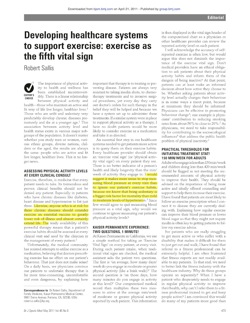The first paper is a study done (as its title says) in Australia, and covers the experience of 621,695 person years of observation around their sitting habits and likelihood of death. And their findings are that there is a greater likelihood with excessive sitting, with the tipping point occurring at 8 hours a day of sitting. The study did not measure whether the sitting was continuous or intermittent, just the total number of hours per day.
In looking at the people in the study ( 222,497 ), 25 percent said they sat 8 hours or more in a 24 hour period. Heavier people, people who smoked, and people with disabilities or in poor health sat longer, as did people who said they had 0 minutes of physical activity per week ( 5.4 percent of people ).
And…regardless of being healthy or unhealthy, overweight or not, people who reported more than 8 hours were more likely to die. The authors pegged the overall responsibility of sitting to 6.9% of deaths. Overall, and interestingly, sitting even in people with high amounts of physical activity also contributed to death in people with cardiovascular disease or diabetes. The right place to be, it appears, is at 150 minutes/week of physical activity and sitting less than 8 hours total per day.
What to do next? Make exercise a real vital sign -> Done!
The second paper is written by colleague Bob Sallis, MD, who has done something remarkable in the medical profession – added a new vital sign. First, what it is: two questions:
- On average, how many days/ week do you engage in moderate or greater physical activity (like a brisk walk)?
- On those days, how many minutes do you engage in activity at this level?
The two numbers are multiplied and the exercise vital sign is officially measured. The part about it officially being “added” is that it’s in the electronic health record, asked at every visit, and positioned with all the other vital signs it now joins, in all of Kaiser Permanente Southern California, more regions to come.
I have been known to say that patient access to their health information should be a vital sign, however, exercise as a vital sign trumps that. Why? Because the human body doesn’t care if its owner sees information, it cares if it is physically active. How much? A lot, and this is a vital sign whose numbers have a direct and linear correlation with longevity.
This addition to our vital sign repertoire also signals a change in what medicine sees as an “urgency” in the medical visit. The damage caused by not enough physical activity is immediate, prolonged, and cumulative. If you haven’t redefined the vital signs where you practice, now you have the recipe, the knowledge that many thousands of doctors are using it, and the future gratitude of your patients and their families.


9 Comments
Love this!
So, um, is there an official definition of a vital sign, recognized by the AMA or something? Or is it just a convention, so people are free to declare one?
I’d love, too, to see more and more studies like the Australian one, to pile on the data and get this to be an official vital sign everywhere.
Do we infer that standing around is much better than sitting?
Maybe Fitbit could start to measure motionless time.
@ePatientDave Hey Dave,
There isn’t an international vital sign standards body that I know of.
And I’d suggest, as Bob Sallis does, that all the studies have been done – we could at this point “just do it.”
If you look into the article, it differentiates sitting as “sedentary” activity which is separate from standing,
Ted
Sweet! MT @tedeytan: Prolonged sitting w/o exercise is not a good combo, "vital signs" redefined to include exercise http://t.co/YjtOhIQO
Dr. Eytan,
It’s interesting but what do you think about someone practicing piano for several hours every day. I mean, yes you’re actually sitting down but on the other hand, you are playing very actively. Would love to read your comment!
Thanks
3Sonata
@3Sonata 3Sonata,
In the end it doesn’t matter what I think, it matters what your body experiences, which is a spectrum from being sedentary to being physically active. Read the papers and let me know what you think!
Ted
Prolonged sitting without exercise is not a good combo, vitals signs redefined to include exercise http://t.co/yC11CvUb
Now Reading: Prolonged sitting without exercise is not a good combo, vitals signs redefined to include exercise http://t.co/FiTQXygi
@KentBottles Another reason to buy an iPad – so I can read this while out walking… http://t.co/MAmpCB2e @tedeytan
Dr. Eytan,
I read the papers and apologize for not reading them beforehand. I’m shocked by the results they found in the first study. It really makes sense that exercise should be incorporated in a vital sigh check-up for any patient at their visits. I never thought that sitting for extensive time periods can be so impacting to one’s health.
I like the fact that the physicians at Keizer Permanente in California are actually interested in a patients exercise status as a vital sign. I think I suffer with pretty bad anxiety and my doctor knows about that of course, yet exercise was never brought up. I absolutely agree with that! Exercise is important, though I feel slightly bad for practicing piano and sitting for too long; however I usually walk after an hour or so of practice. I love my little walking intervals!
Also, I read that while practicing piano you can burn up to 80-118 calories for an average weight of 150 lbs and I’m around there somewhere. Just saying though, probably doesn’t matter but that was interesting as well. But after all, I agree with you that it’s about what your body experiences.
Love to read your comment and sorry for the long essay.
Thank you!
3Sonata